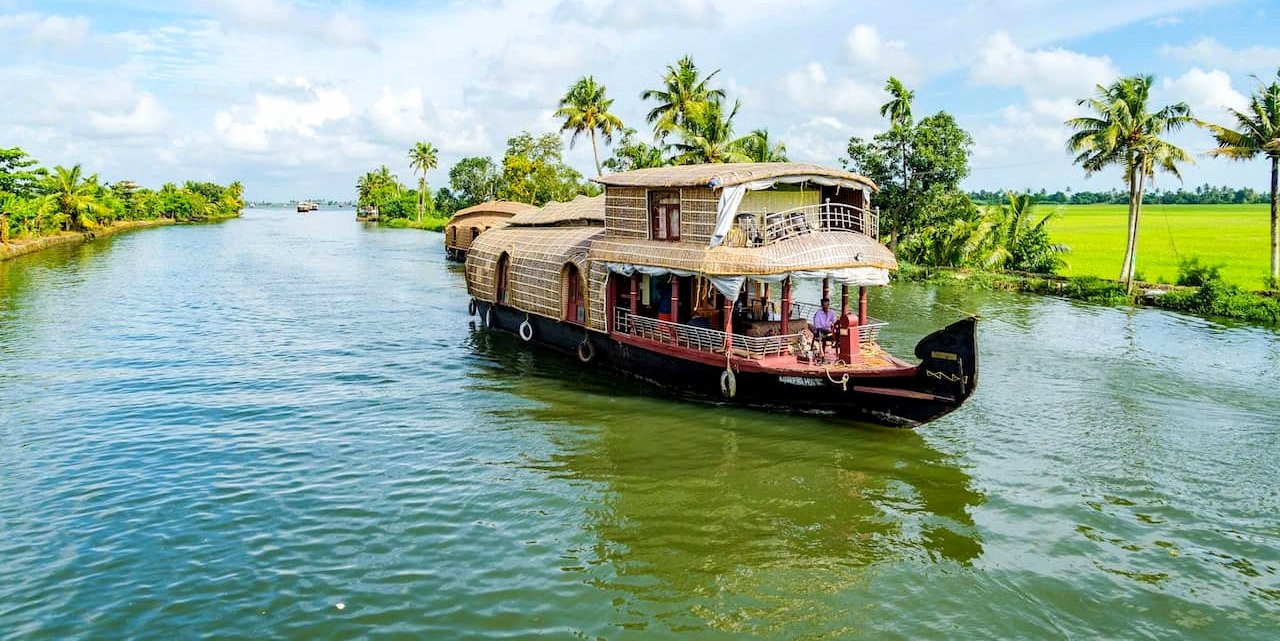Delhi- the capital City of India
Visiting Delhi is like stepping into a dynamic timeline—where centuries-old monuments, bustling markets, colonial-era architecture, and modern developments coexist in a lively symphony. As the capital of India, Delhi is not just a city; it's an immersive experience steeped in history, culture, cuisine, and contrast. Whether you're a first-time traveler or a seasoned explorer, here’s what you need to know to make the most of your trip to this iconic city.
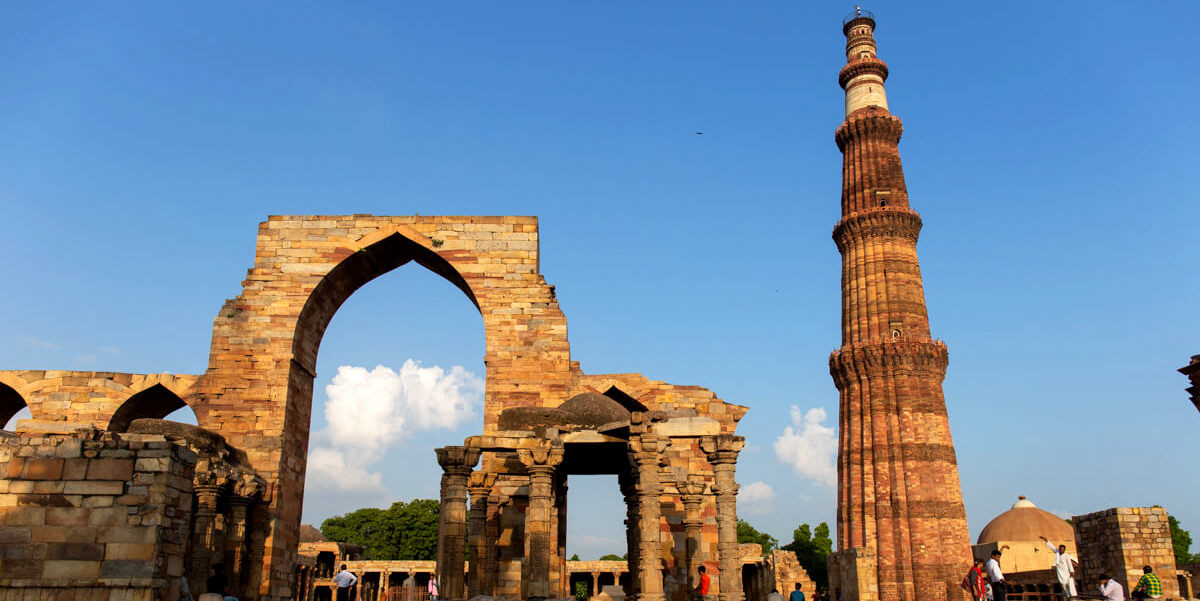
Must-See Attractions in Delhi
- Red Fort (Lal Qila): A UNESCO World Heritage Site and a symbol of India's independence, this magnificent red sandstone fort was the main residence of the Mughal emperors for nearly 200 years. Don’t miss the evening sound and light show that tells the story of Delhi's royal past.
- Humayun’s Tomb: Often referred to as the inspiration behind the Taj Mahal, this stunning 16th-century tomb is a beautiful example of Mughal architecture, surrounded by serene gardens perfect for a peaceful stroll.
- Qutub Minar: Standing tall at over 72 meters, this red sandstone tower is another UNESCO-listed monument and a marvel of Indo-Islamic architecture, surrounded by ancient ruins.
- India Gate: This imposing war memorial, resembling Paris’s Arc de Triomphe, is beautifully lit in the evening and surrounded by well-kept lawns—ideal for a relaxing evening with family or friends.
- Lotus Temple: Known for its flower-like shape and tranquil atmosphere, this Bahá’í House of Worship welcomes people of all faiths and is an architectural wonder in itself.
- Jama Masjid: One of the largest mosques in India, this 17th-century marvel offers panoramic views of Old Delhi from its minarets and an authentic cultural experience amidst the chaos of Chandni Chowk.
Visit the Taj Mahal
Visiting the Taj Mahal is a once-in-a-lifetime experience, cherished not only for its architectural beauty but also for its rich historical significance and romantic allure. Here's what you need to know to make the most out of your visit to this iconic monument in Agra, India:
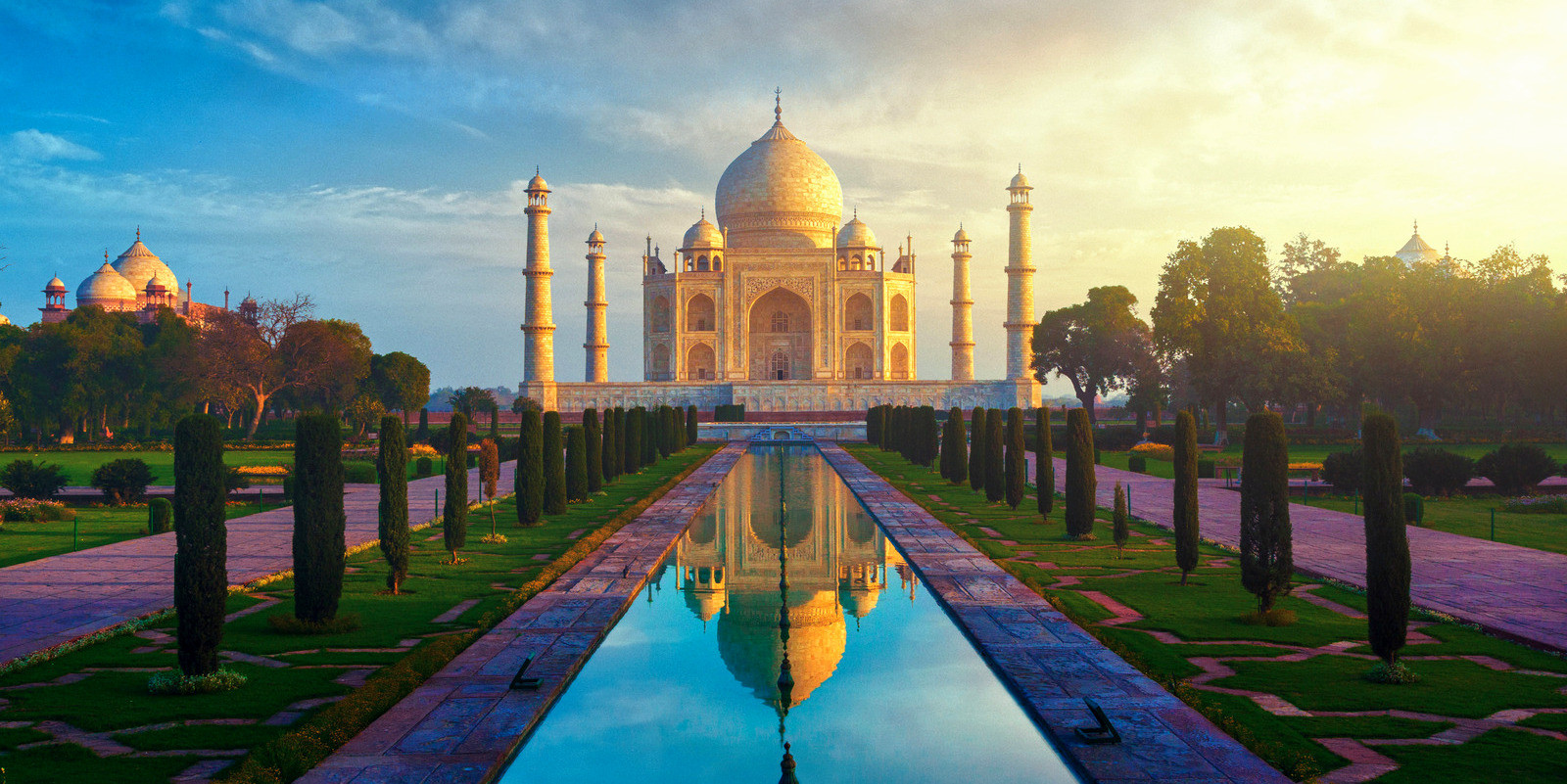
Tickets and Entry: You can purchase tickets online or at the gate. There are separate queues for foreign and domestic visitors, and the ticket price for foreigners includes a shoe cover, water bottle, and tourist map of Agra. There are three gates to enter the Taj Mahal: the West, East, and South gates. The East Gate generally has shorter lines, and it's advisable to arrive a bit earlier than your planned entry time to navigate through security checks.
What to See and Do
-
The Main Mausoleum: Taj Mahal itself, with its intricate inlay work using semi-precious stones, is the centerpiece. Photography inside the mausoleum is not allowed, but the exterior offers countless angles for stunning photos.
-
The Gardens: The Charbagh Gardens divide the space in front of the Taj into four equal parts, symbolizing the gardens of Paradise described in Islamic texts.
-
The Mosque and Guest House: Flanking the Taj Mahal are two red sandstone buildings—the mosque and the guest house—that mirror each other and provide a beautiful architectural balance to the mausoleum.
-
The Yamuna River: The river behind the Taj Mahal offers a quiet spot to reflect on the beauty of the structure and its natural surroundings.
Cultural Significance: The Taj Mahal is not just a monument but a symbol of love, built by Emperor Shah Jahan in memory of his wife Mumtaz Mahal. The site combines elements from Islamic, Persian, Ottoman Turkish, and Indian architectural styles, making it a masterpiece of world heritage.
Whether you're an avid historian, architecture lover, or simply looking for a beautiful place to visit, the Taj Mahal offers a profound glimpse into the artistry and heritage of India, making it a must-visit on any trip to the country.
Explore Rajasthan
Exploring Rajasthan is like stepping into a colorful tapestry of history, culture, and natural beauty. Known as the "Land of Kings," Rajasthan is famous for its magnificent forts, opulent palaces, vibrant festivals, and rich traditions. Here's a guide to making the most of your visit to this incredible Indian state:
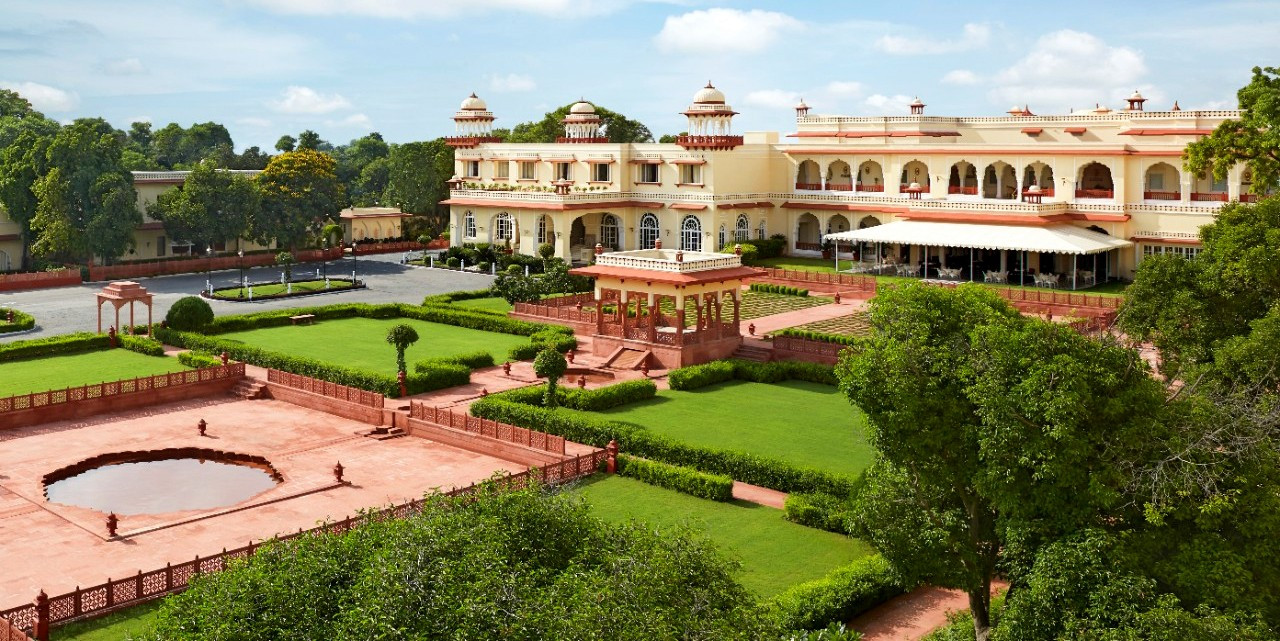
Major Cities and Attractions
-
Jaipur: Often called the "Pink City" for its distinctly colored buildings, Jaipur is the gateway to Rajasthan. Key attractions include the Amer Fort, City Palace, Hawa Mahal, and the Jantar Mantar observatory. The city is also a great place for shopping, with bustling bazaars that offer a variety of textiles, jewelry, and handicrafts.
-
Udaipur: Known as the "City of Lakes," Udaipur is famous for its serene beauty and romantic setting. The City Palace, which stretches along the eastern shore of Lake Pichola, and the Lake Palace, set on an island in the same lake, are not to be missed. Udaipur is also known for its vibrant art scene and lovely countryside.
-
Jodhpur: The "Blue City," Jodhpur, is dominated by the imposing Mehrangarh Fort, which looms above the city's blue-painted houses. The fort offers breathtaking views and houses a well-curated museum. Nearby, the Umaid Bhawan Palace provides a glimpse into the opulent lifestyle of Rajasthan's royalty.
-
Jaisalmer: Situated in the heart of the Thar Desert, Jaisalmer is famed for its golden fortress, which emerges dramatically from the sands. The city's havelis (ornate homes), such as Patwon Ki Haveli, are intricately carved and a major draw for visitors. Camel safaris in the desert can also be a highlight of your visit.
-
Pushkar: Known for its annual camel fair, which attracts thousands of tourists and locals, Pushkar is a small, mystic town centered around a holy lake. It is also home to one of the few Brahma temples in the world.
-
Ranthambore National Park: For wildlife enthusiasts, a visit to Ranthambore offers the chance to see tigers in the wild, as well as a variety of other species like leopards, hyenas, and crocodiles, all within the backdrop of a majestic fort.
Cultural Experiences
-
Festivals: Participating in local festivals can greatly enrich your travel experience. Diwali (Festival of Lights) and Holi (Festival of Colors) are celebrated with great enthusiasm throughout Rajasthan, but the Desert Festival in Jaisalmer and the Pushkar Camel Fair offer unique local flavors.
-
Cuisine: Rajasthan’s cuisine is rich and varied. Don’t miss trying dishes like dal baati churma (lentils and baked ball of flour), gatte ki khichdi (steamed and spiced gram flour balls), and laal maas (spicy mutton curry).
-
Crafts and Textiles: Rajasthan is famous for its handicrafts and textiles. Block prints, tie-dye textiles, and traditional jewelry are especially popular. Visiting local artisan villages like Bagru and Sanganer can provide insights into traditional methods of craft making.
Exploring Rajasthan offers a journey through time, showcasing the glory of India's royal past, vibrant cultural traditions, and breathtaking landscapes. Whether wandering the palatial complexes of Jaipur, cruising the serene lakes of Udaipur, or venturing into the stark beauty of the Thar Desert, Rajasthan promises memories that will last a lifetime.
Cruise the Kerala Backwaters
Cruising the Kerala backwaters is an exquisite and tranquil experience, offering a unique perspective on the lush landscapes and traditional lifestyles of this beautiful region in southern India. Here’s what you need to know to make the most out of your backwater cruise:
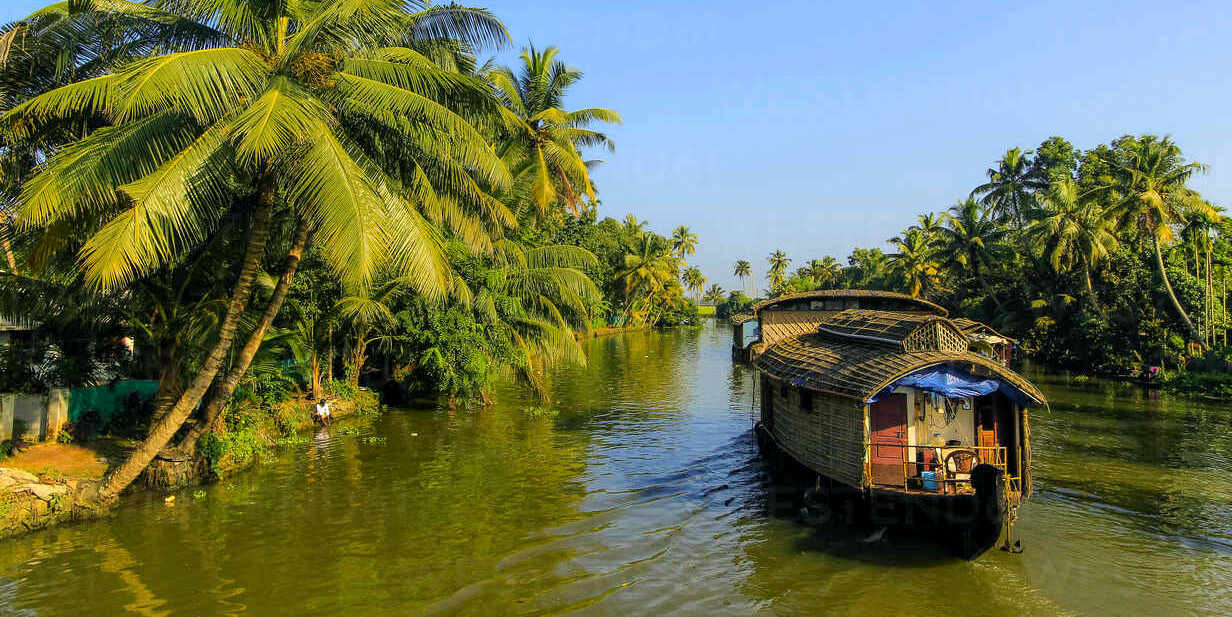
What are the Kerala Backwaters?
The Kerala backwaters are a network of interconnected canals, rivers, lakes, and inlets that form over 900 kilometers of waterways. This intricate system, lying parallel to the coast of the Arabian Sea, is most famous for its unique ecosystem, palm-lined shores, and the traditional houseboats (called "kettuvallams") that ply the waters.
Best Places for a Backwater Cruise
-
Alleppey (Alappuzha): Often termed the 'Venice of the East,' Alleppey is the most popular gateway for backwater cruises. It is known for its houseboat cruises that take you through the vast Vembanad Lake and tranquil canals lined with greenery.
-
Kumarakom: Located near Vembanad Lake, Kumarakom offers a more serene backwater experience, with its quiet lagoons, coconut groves, and rice paddies. It is also a great spot for bird watching, especially at the Kumarakom Bird Sanctuary.
-
Kollam: Further south, Kollam provides longer cruise options that can extend up to Ashtamudi Lake, renowned for its multiple branches and palm-fringed edges.
Experiencing a Houseboat Cruise
-
Houseboats: Traditional kettuvallams have been converted into luxurious floating homes with amenities like air-conditioned rooms, onboard chefs, and private balconies. These houseboats range from standard to luxury categories, with options for every budget.
-
Duration: You can choose from a range of durations for your cruise, typically starting from a few hours to overnight stays. Overnight cruises offer a complete experience, including sunset and sunrise views over the backwaters.
-
Itinerary: While on board, you can enjoy traditional Kerala cuisine, watch local fishermen in their canoes, and stop at villages to see coir (coconut fiber) manufacturing, paddy cultivation, and other traditional forms of livelihood.
Cultural Insights: Cruising the backwaters also gives you a glimpse into the local culture of Kerala. You might see the famous snake boat races during the harvest season, local children commuting to school by boat, and villagers going about their daily activities by the water’s edge.
Eco-friendly Practices: As the backwaters are an essential part of Kerala’s ecosystem, choosing eco-friendly houseboats and operators who prioritize sustainable practices helps preserve this unique environment for future generations.
A Kerala backwaters cruise offers a peaceful retreat from the fast-paced world, letting you drift along at the gentle pace of the waters, surrounded by nature’s bounty. It’s a perfect way to unwind, experience the quiet rural life of Kerala, and enjoy the scenic beauty and tranquility of the region.
Join a Wildlife Safari
Joining a wildlife safari in India is an exhilarating experience that allows you to witness some of the world’s most fascinating creatures in their natural habitats. India, with its diverse ecosystems and vast wilderness areas, offers unparalleled opportunities for wildlife enthusiasts. Here’s how you can make the most out of your wildlife safari adventure in India:
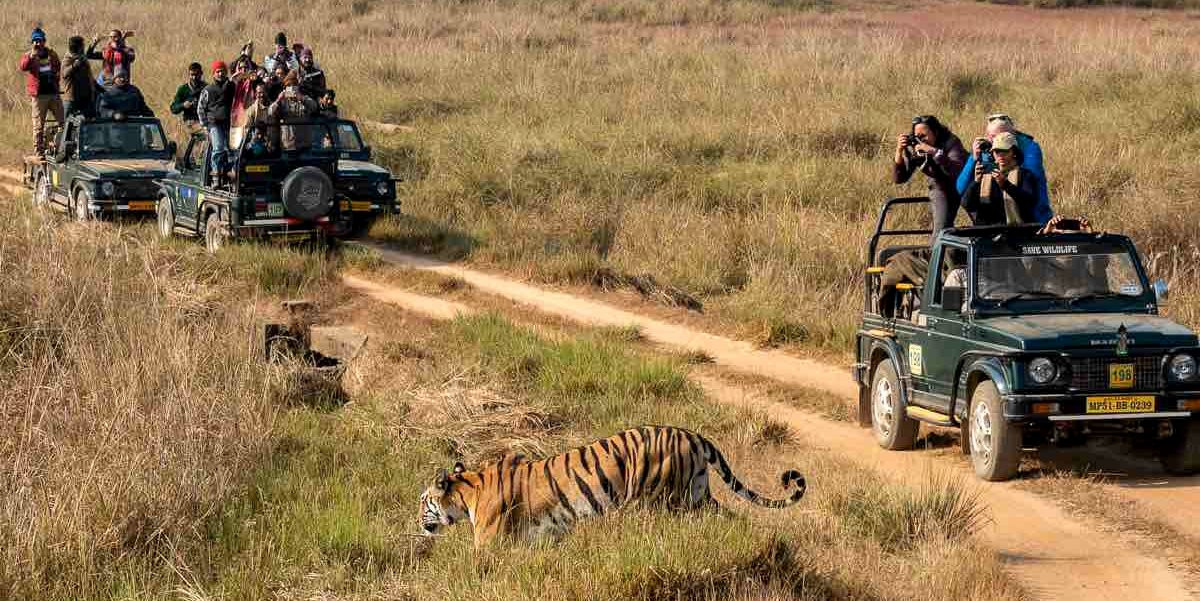
Top Destinations for Wildlife Safaris in India
-
Ranthambore National Park, Rajasthan: Famous for its tiger sightings, Ranthambore is one of the best places to see these majestic animals in the wild. The park's rugged terrain, dotted with ancient ruins, creates a dramatic backdrop for wildlife viewing.
-
Jim Corbett National Park, Uttarakhand: Established in 1936 as India’s first national park, Jim Corbett is a haven for wildlife and a premier destination for spotting the elusive Bengal tiger. The park’s diverse landscapes include hills, riverine belts, grasslands, and large lakes.
-
Kaziranga National Park, Assam: Home to the world’s largest population of one-horned rhinoceroses, Kaziranga is also a UNESCO World Heritage Site. Besides rhinos, the park is rich in other wildlife including elephants, tigers, panthers, and various bird species.
-
Bandhavgarh National Park, Madhya Pradesh: With one of the highest densities of Bengal tigers in the world, Bandhavgarh is a relatively small park that offers excellent tiger sighting opportunities. The park also features an ancient fort, and sightings of leopards and various deer species are common.
-
Sunderbans National Park, West Bengal: Located in the Ganges Delta, the Sunderbans are a network of mangrove forests and waterways, making it a unique safari destination. This tidal habitat is known for its tigers, which have adapted to a semi-aquatic lifestyle, and its rich birdlife.
What to Expect on a Safari
-
Safari Drives: Most wildlife safaris are conducted in open jeeps, which allow for unobstructed views of the animals. Safaris usually take place early in the morning or late in the afternoon, coinciding with the times when animals are most active.
-
Guided Tours: Experienced guides and naturalists accompany you, enhancing your experience by providing insights into animal behavior, tracking skills, and the ecological significance of the environment.
-
Photography Opportunities: Wildlife safaris offer fantastic photography opportunities. Whether you’re an amateur or a professional, capturing wildlife in their natural surroundings can be a rewarding experience.
-
Stay and Dining: Many national parks have a range of accommodation options from luxury lodges to budget camps. These often offer meals and sometimes include evening entertainment like local dances or bonfires.
A wildlife safari in India is not just an adventure; it’s an intimate experience of nature that can be both humbling and awe-inspiring. Whether it’s the thrill of a tiger hunt or the gentle grazing of a herd of deer, each safari offers a unique glimpse into the wild heart of India.
Attend an Indian Festival
Attending an Indian festival is a vibrant, immersive experience that showcases the rich tapestry of culture, tradition, and community spirit unique to India. Each festival, whether rooted in religion, seasons, or folklore, is celebrated with elaborate rituals, colorful decorations, and an infectious sense of joy and togetherness. Here’s a guide to some of the most iconic festivals in India and what makes them must-experience events:
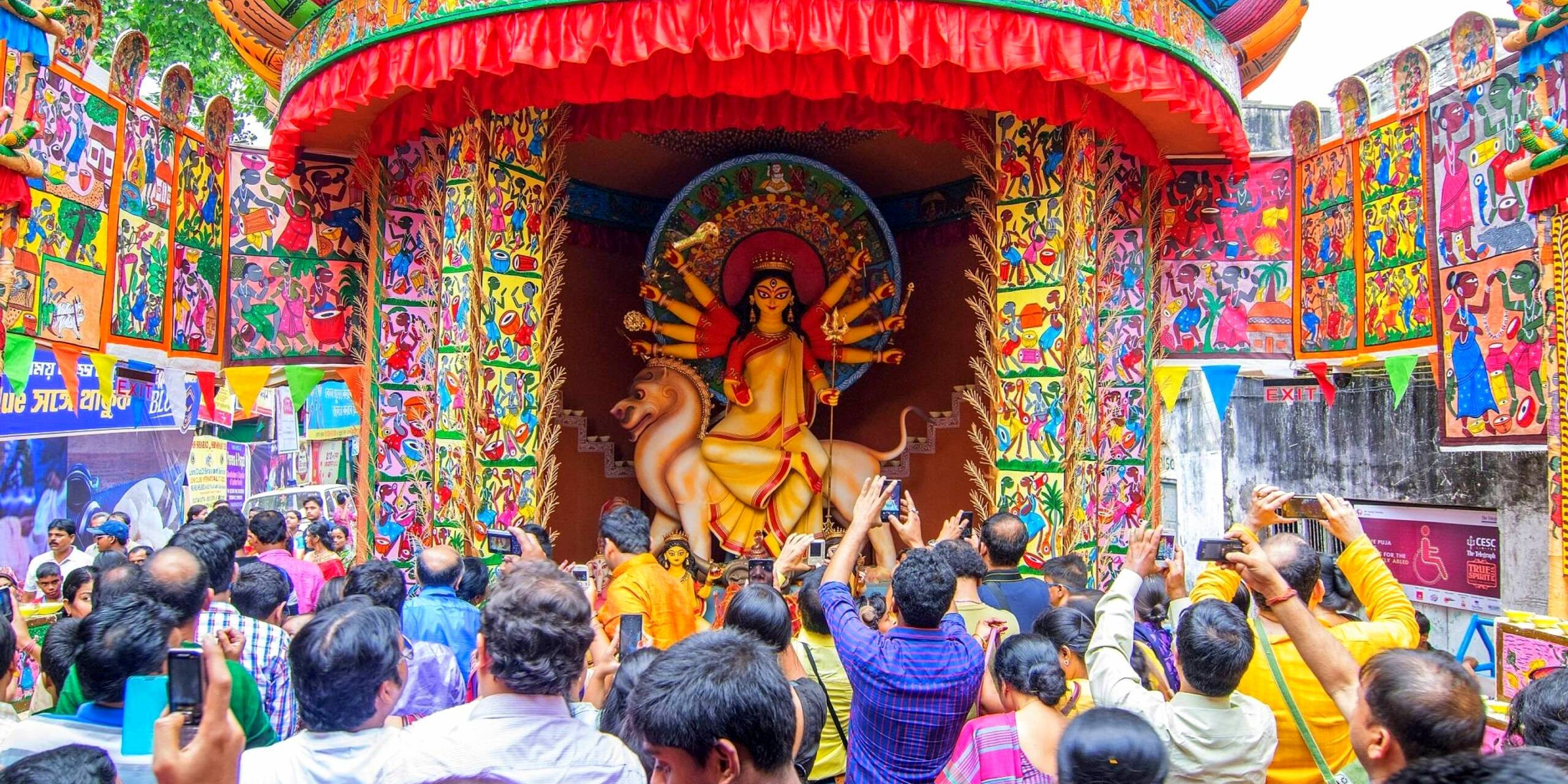
-
Diwali (The Festival of Lights): Celebrated nationwide, Diwali is one of the most important and widely observed Hindu festivals. It symbolizes the victory of light over darkness and good over evil. Homes and public spaces are decorated with small oil lamps (diyas), lights, and rangoli (artistic designs created on the floor using colored powders or flowers). Fireworks light up the night sky, and families gather to share sweets, gifts, and festive meals. Visiting during Diwali offers a chance to see India at its brightest and most joyful.
-
Holi (The Festival of Colors): Holi is a high-spirited festival marking the arrival of spring. Known for its vibrant play of colors, Holi is when people throw colored powder and water at each other, sing and dance, and enjoy festive foods and drinks like gujiya (a sweet dumpling) and thandai (a spiced milk drink with nuts). Participating in Holi is a playful and exhilarating experience, reflecting the fun-loving nature of the Indian culture.
-
Navaratri, Durga Puja, and Dussehra: These interconnected festivals are celebrated differently across regions. Navaratri spans nine nights and is dedicated to the goddess Durga. In Gujarat, it is celebrated with nightly dances called Garba and Dandiya. In West Bengal, it culminates in Durga Puja, a visually spectacular event honoring the goddess with massive, artistically crafted idols and pandals (temporary structures set up for worship). Dussehra follows Navaratri and celebrates the defeat of the demon king Ravana by Lord Rama, marked by dramatic enactments of the Ramayana and the burning of Ravana's effigies.
-
Onam (Kerala’s Harvest Festival): Onam is the official state festival of Kerala and celebrates the harvest and the mythical King Mahabali, whose spirit is said to visit Kerala at this time of the year. The festivities include a grand feast called Onasadya, snake boat races, folk dances like Kathakali and Thiruvathira, and intricate floral decorations (Pookalam).
-
Eid-ul-Fitr and Eid-ul-Adha: These are significant festivals for the Muslim community in India, celebrated with great fervor. Eid-ul-Fitr marks the end of Ramadan, the holy month of fasting, while Eid-ul-Adha commemorates the willingness of Ibrahim to sacrifice his son in obedience to God. Both Eids are celebrated with special prayers, feasts, and the exchange of gifts and sweets among family and friends.
Each festival in India offers a unique window into the diverse cultural fabric of the country and provides unforgettable experiences through its customs, music, dance, and gastronomy. Whether it’s the colorful chaos of Holi or the reverent rituals of Navaratri, attending an Indian festival is an enriching, joyous, and enlightening experience that reflects the heart and soul of India.
Go Trekking in the Himalayas
Trekking in the Himalayas within India offers adventurers a chance to explore some of the most awe-inspiring landscapes on the planet. From high-altitude trails to lush, verdant valleys, the Indian Himalayas present a variety of trekking opportunities that cater to both novice hikers and experienced mountaineers. Here's a concise guide to some of the best trekking routes within the Indian Himalayas:
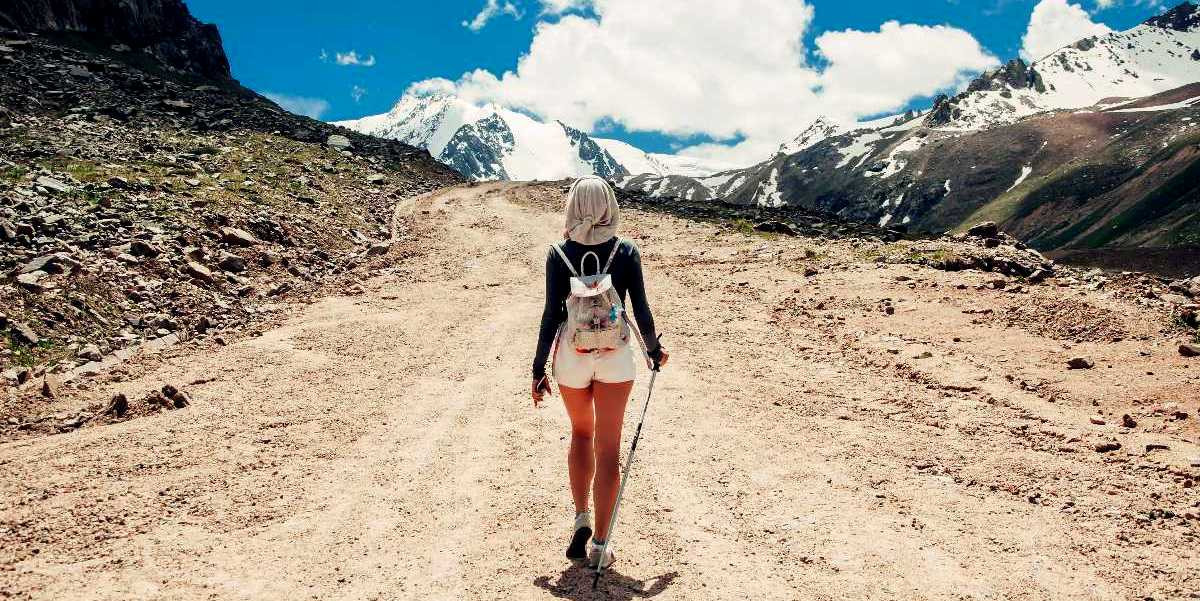
Popular Trekking Routes in India
-
Leh-Ladakh Trek (Markha Valley): Known for its stark beauty and remote monasteries, the Markha Valley in Ladakh is often called "Little Tibet." This trek offers an opportunity to explore the unique culture of the region, with stops at local villages and ancient monasteries, set against the backdrop of desolate, high-altitude landscapes.
-
Valley of Flowers Trek (Uttarakhand): This trek is renowned for its vibrant display of alpine flowers and breathtaking natural beauty. Best visited from July to September, the Valley of Flowers National Park comes alive with blossoms, creating a tapestry of vivid colors framed by snowy peaks.
-
Roopkund Trek (Uttarakhand): Famous for the mysterious skeletal remains found in Roopkund Lake, this trek involves walking through lush forests and alpine meadows in the lap of the Trishul Massif. The final destination is the high altitude lake, which is surrounded by rock-strewn glaciers and snow-clad peaks.
-
Chadar Trek (Ladakh): A unique trek that involves walking on the frozen Zanskar River. The Chadar Trek is a challenging route available only during the winter months when the temperatures cause the river to freeze over.
-
Har Ki Dun Trek (Uttarakhand): This trek is known as the 'Valley of Gods' and offers a gentle incline, making it suitable for beginners and families. It provides stunning views of snow-covered peaks and dense pine forests.
Trekking in the Indian Himalayas is an exhilarating experience that combines physical challenges with cultural immersion and stunning natural beauty. Each trail offers a unique window into the diverse landscapes and traditions of this vast and varied region. Whether you seek solitude, adventure, or spiritual enrichment, the Himalayas in India provide an unforgettable backdrop for your trekking adventure.
Relax at Yoga Retreats
Relaxing at a yoga retreat in India is not just about enhancing your physical well-being, but also about immersing yourself in spiritual enrichment and tranquility. India, the birthplace of yoga, offers numerous retreats set in idyllic locations, where tradition and tranquility promote a profound inner journey. Here’s how you can make the most of your experience at a yoga retreat in India:
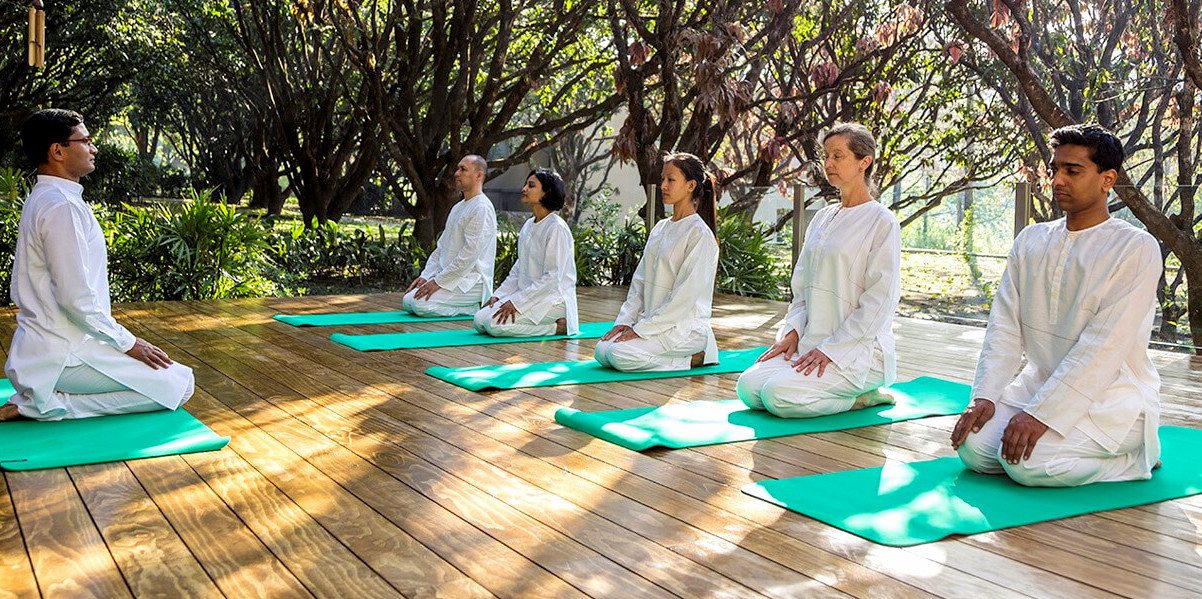
Top Locations for Yoga Retreats in India
-
Rishikesh: Often referred to as the ‘Yoga Capital of the World’, Rishikesh is nestled along the banks of the Ganges River in the foothills of the Himalayas. It is home to numerous ashrams, and its spiritual environment is ideal for meditation and yoga practices.
-
Mysore: Known for its deep-rooted history in Ashtanga yoga, Mysore attracts yoga practitioners from all over the globe. The city offers a more structured yoga practice regimen, ideal for those looking to enhance their physical strength and discipline.
-
Goa: With its sandy beaches and relaxed vibe, Goa provides a perfect backdrop for yoga enthusiasts looking to combine yoga practice with a vacation mood. Many retreats here offer a blend of yoga and Ayurvedic treatments.
-
Kerala: Known for its serene backwaters and lush greenery, Kerala hosts several yoga retreats that focus on holistic living, combining yoga with Ayurvedic healing practices and organic living.
-
Dharamshala: Set in the lap of the Himalayas, Dharamshala is the home of the Dalai Lama and offers a tranquil setting for yoga. It is an ideal place for those seeking peace and spiritual connection amidst natural beauty.
What to Expect at a Yoga Retreat
-
Daily Yoga Sessions: Most retreats offer multiple daily yoga sessions tailored to different skill levels, from beginners to advanced practitioners.
-
Meditation and Pranayama: Besides physical postures, retreats also focus on meditation and breathing techniques to enhance mental clarity and emotional stability.
-
Sattvic Diet: Many retreats serve a vegetarian or vegan sattvic diet, designed to complement your yoga practice and cleanse your body.
-
Wellness Activities: Additional wellness activities like Ayurvedic spa treatments, cooking classes, and local excursions are often part of the retreat experience.
Benefits of Attending a Yoga Retreat
-
Deepen Your Practice: A retreat can provide the tools and teachings needed to deepen your understanding of yoga, both as a physical and spiritual practice.
-
Digital Detox: Many retreats encourage guests to disconnect from their digital devices, allowing for a true mental and emotional reset.
-
Community and Solitude: While you can engage with a community of like-minded individuals, you also have the opportunity to spend time alone, reflecting and reconnecting with yourself.
-
Connect with Nature: Yoga retreats in India often boast stunning natural surroundings that enhance the experience and promote a deep connection with the earth.
A yoga retreat in India is an opportunity to restore balance and rejuvenate your body and mind. It's a chance to learn under experienced yogis in the land where yoga originated, offering a depth of practice that goes far beyond the physical aspects of yoga. Whether you’re a seasoned practitioner or a curious beginner, a yoga retreat in India could be a transformative and enlightening experience.
Savor Indian Cuisine
Savoring Indian cuisine is an adventure for the senses, given its exquisite blend of flavors, spices, and regional diversity. Each region of India offers its unique dishes, influenced by local ingredients, climate, and historical factors. Here’s a guide to exploring the rich culinary landscape of India:
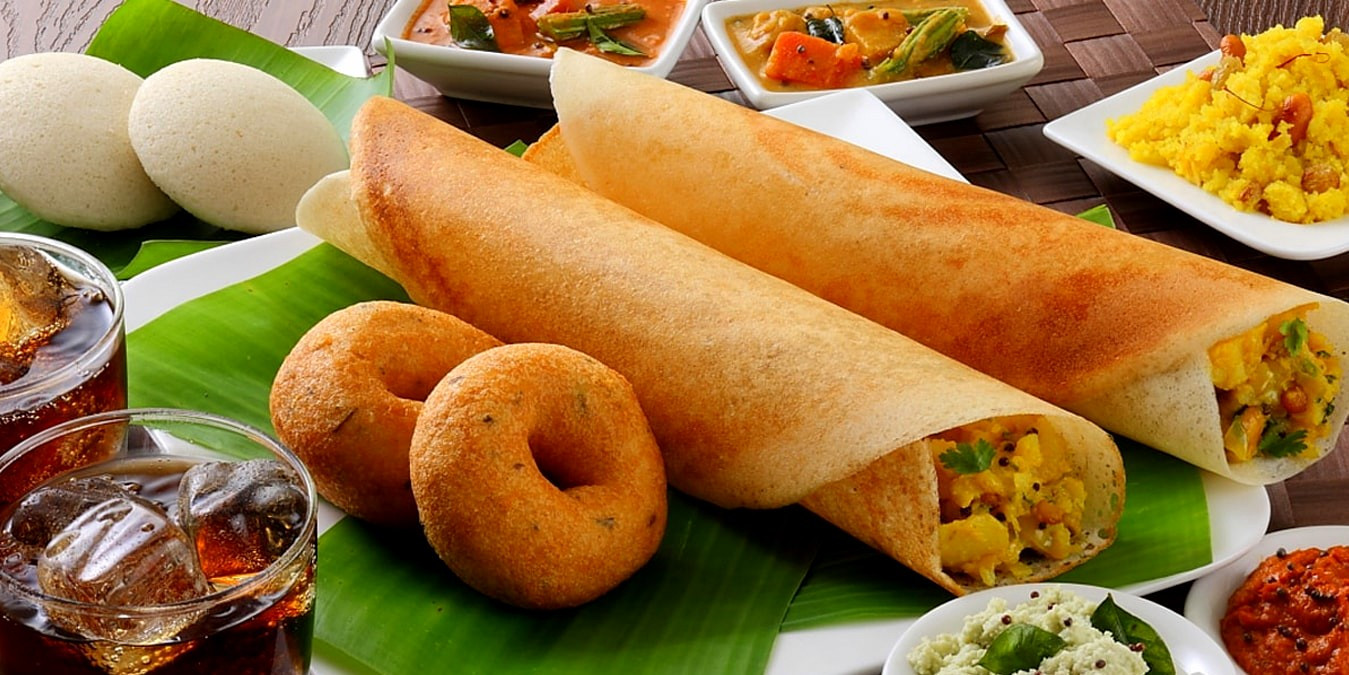
Regional Cuisines of India
-
North Indian Cuisine: Known for its hearty dishes and extensive use of dairy, North Indian cuisine includes staples like naan, roti, and parathas. Popular dishes include butter chicken, paneer butter masala, and dal makhani. The food is often rich, with a generous use of spices and ghee.
-
South Indian Cuisine: Characterized by the use of rice, lentils, and stews, South Indian dishes are typically spicier than those in the north. Signature dishes include dosa, idli, vada, and sambhar. Coconut plays a significant role in flavoring and cooking methods.
-
East Indian Cuisine: Famous for its desserts like rasgulla and sandesh, East Indian cuisine also offers a variety of seafood dishes, owing to the coastal geography. Must-try dishes include fish curry, pakhala (fermented rice), and momo (dumplings influenced by neighboring Nepal).
-
West Indian Cuisine: This region includes the states of Goa, Gujarat, and Maharashtra, each offering distinct flavors. Goan cuisine, for instance, is renowned for its seafood and coconut milk-based curries, while Gujarati cuisine is predominantly vegetarian, known for its sweet, salty, and spicy flavor profile.
Street Food: Indian street food is a vital part of the culinary experience. Chaat (a term that covers a range of spicy snacks), pani puri, bhel puri, and pav bhaji are just a few of the delicious snacks available on almost every street corner.
Dining Etiquette
-
Eating with Hands: It's common in many parts of India to eat with your hands, particularly with dishes like biryani or naan. It’s seen not only as a traditional practice but also as an enhancement to the sensory dining experience.
-
Sharing Dishes: Indian meals are often served family-style, intended to be shared.
Culinary Experiences
-
Cooking Classes: Participate in a cooking class to learn how to use Indian spices and prepare local dishes. This is a great way to take the flavors of India home with you.
-
Food Tours: Many cities offer guided food tours that introduce visitors to the best local eats and treats, providing deeper insights into the cultural significance of the dishes.
Drinks and Sweets
-
Beverages: Try masala chai, a spiced milk tea, or lassi, a refreshing yogurt-based drink. There’s also a wide range of regional alcoholic beverages like Goan feni or Assamese rice beer.
-
Desserts: Indian sweets are not to be missed. Jalebi, kheer (rice pudding), and kulfi (Indian ice cream) are delightful endnotes to any meal.
Considerations for Travelers
-
Spice Levels: Be aware of the spice levels, which can be higher than many are accustomed to. You can often request less spice when ordering.
-
Street Food Safety: While street food is a must-try, choose vendors that have a high turnover, ensuring food is fresh and hot.
Exploring Indian cuisine is like uncovering layers of historical and cultural influences through taste. Each meal is a celebration, and each region has its gastronomic delights, making India a true paradise for food lovers. Whether you’re indulging in the rich gravies of the North, the fiery treats of the South, the sweet notes of the East, or the bold flavors of the West, Indian cuisine promises a thrilling journey for your palate.
Shop at Local Markets
Shopping at local markets in India is an enchanting experience, offering a glimpse into the everyday life and vibrant culture of the country. These markets are not just places to buy goods but are bustling centers of activity where you can soak in the local colors, scents, and sounds. Whether you're looking for handicrafts, textiles, jewelry, spices, or just a vibrant atmosphere, Indian markets have something for everyone. Here’s a guide to making the most of your shopping adventure in India:
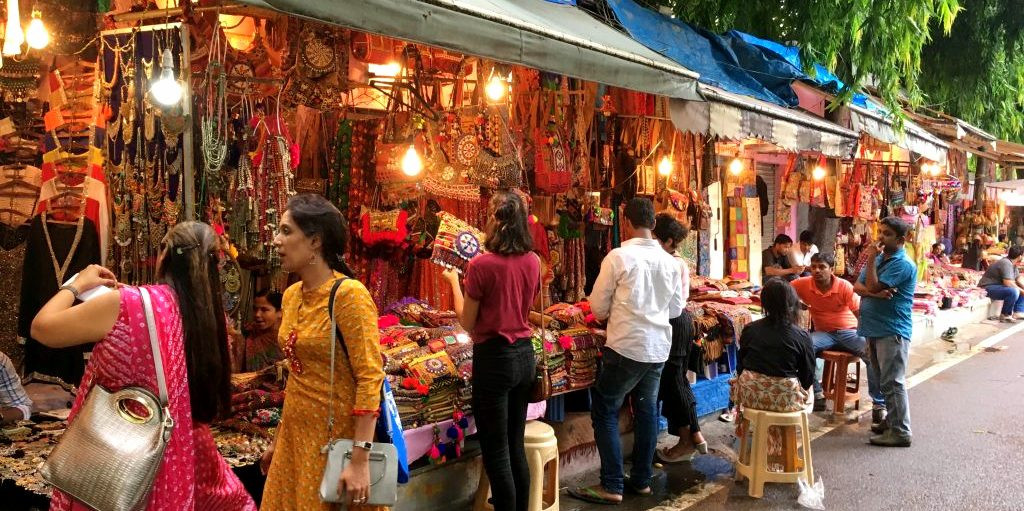
Iconic Markets to Explore
-
Dilli Haat, New Delhi: An open-air market and food plaza, Dilli Haat offers an array of handcrafted items from all over India. From textiles and garments to beads and metal crafts, this market is set up to resemble a traditional village market and is a great place to find authentic Indian souvenirs.
-
Johari Bazaar, Jaipur: Famous for its jewelry, especially those embedded with precious and semi-precious stones, Johari Bazaar is a must-visit for anyone looking to buy traditional Indian jewelry. The market is also a good place to shop for sarees and lehengas (traditional long skirts).
-
Colaba Causeway, Mumbai: Offering everything from trendy clothing to British-era antiques, Colaba Causeway is a lively street shopping experience. It’s also perfect for picking up unique home decor items and Indian costume jewelry.
-
Commercial Street, Bangalore: A bustling shopping area where you can find a variety of items ranging from clothes and shoes to electronic goods and art. The street is lined with both branded stores and small vendors, offering a dynamic shopping experience.
-
New Market, Kolkata: Also known as Hogg Market, New Market is one of Kolkata's oldest markets and provides a chaotic but charming shopping experience. You can find a diverse assortment of goods including clothing, accessories, spices, and sweets.
Cultural Etiquette
-
Respect Local Norms: Be mindful of local customs and dress modestly, especially in more conservative areas.
-
Language: Learning a few basic phrases in the local language can endear you to vendors and may even help you get better prices.
-
Photography: Always ask for permission before taking photos, especially of people or private stalls.
Shopping at local markets in India can be a delightful part of your travel experience, offering insights into the country's rich cultural tapestry. It’s not just about what you buy but the memories you create while wandering through these vibrant marketplaces, interacting with vendors, and experiencing the local lifestyle.
Relax on the Beaches of Goa
Relaxing on the beaches of Goa is a quintessential experience for any traveler seeking both adventure and tranquility along India's western coast. Known for its laid-back vibe, stunning coastline, and vibrant nightlife, Goa offers a unique blend of Indian and Portuguese cultures. Here’s how to make the most of your beach holiday in this beautiful state:
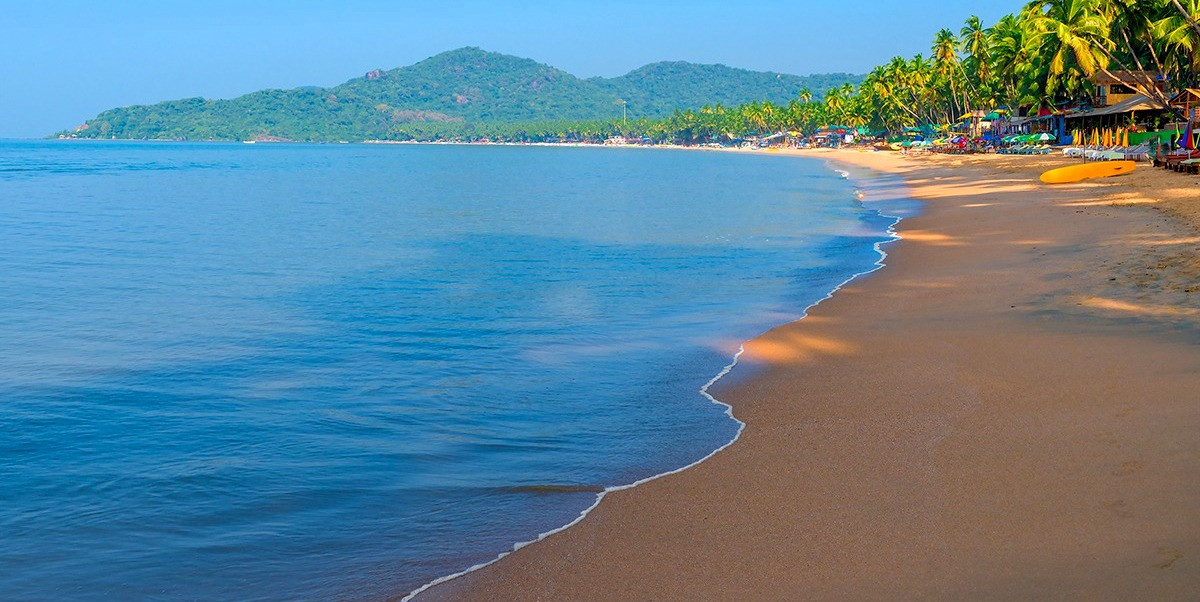
Top Beaches in Goa
-
Palolem Beach: Known for its scenic beauty and relatively peaceful surroundings, Palolem is a crescent-shaped beach surrounded by palm trees. The beach offers a perfect mix of natural beauty and a range of accommodations suitable for every budget.
-
Calangute Beach: Often referred to as the "Queen of Beaches," Calangute is the largest beach in North Goa. It is great for tourists looking for a lively atmosphere, with plenty of restaurants, clubs, and shops.
-
Baga Beach: Adjacent to Calangute, Baga Beach is famous for its nightlife, with some of Goa’s most popular bars and clubs. It's also a great spot for water sports like jet skiing and parasailing.
-
Anjuna Beach: Famous for its trance parties and the Wednesday flea market, Anjuna also offers a rocky beach with a dramatic red cliff backdrop. It's a popular spot for backpackers and those looking for a bohemian vibe.
-
Arambol Beach: A favorite among long-term travelers, Arambol has a distinct bohemian feel, with live music and informal market stalls. The beach is less commercialized and offers areas for paragliding and kite surfing.
Things to Do
-
Water Sports: Most of the popular beaches in Goa offer a range of water sports activities. From banana boat rides and wind surfing to kite surfing and scuba diving, there’s no shortage of water-based adventures.
-
Yoga and Wellness: Numerous wellness centers and yoga retreats can be found near the beaches. Participating in a yoga class at dawn or sunset by the beach is a rejuvenating experience.
-
Night Markets and Flea Markets: The Anjuna Flea Market, held every Wednesday, and the Arpora Saturday Night Market are great for shopping, enjoying live music, and tasting local and international foods.
-
Cultural Tours: Explore Goa’s Portuguese heritage through its architecture and landmarks. Visit the old forts, churches (like the Basilica of Bom Jesus), and Portuguese homes that dot the landscape.
Relaxing on Goa’s beaches offers a perfect blend of natural beauty, cultural experiences, and fun-filled activities. Whether you’re here to unwind on the sandy shores, indulge in water sports, or explore the cultural sites, Goa provides a memorable escape suited for all kinds of travelers.
Tips for Things to do in India
Exploring India offers an exhilarating blend of cultural experiences, adventure activities, and historical exploration. To make the most of your trip across this diverse country, here are some essential tips for engaging in various activities:
-
Plan According to the Weather: Plan your visit according to the best seasons for the regions you intend to explore. For example, winter (November to February) is ideal for northern and central India, while the cooler monsoon period (June to September) is great for the lush landscapes of southern and northeastern India.
-
Respect Local Customs and Traditions: Dress modestly, especially when visiting religious sites. Learn some basic local phrases to show respect and enhance your interaction with locals.
-
Stay Healthy: Stick to bottled water, avoid street food that doesn't seem fresh or well-cooked, and carry hand sanitizer. Considering the diverse cuisines and spice levels, start mild and gradually adapt to local food to avoid digestive issues.
-
Embrace Public and Local Transport: They're economical and offer a real glimpse into everyday Indian life. For shorter distances within cities, try auto-rickshaws or cycle rickshaws for an authentic experience.
-
Engage in Local Festivals: India is known for its vibrant festivals like Diwali, Holi, and Durga Puja. Participating in these events offers a profound insight into India's cultural fabric.
-
Explore Beyond Tourist Hotspots: Discover lesser-known sites to avoid crowds and gain unique experiences. India has countless underrated places that are off the beaten path, offering tranquility and a more personal connection to the country's heritage and natural beauty.
-
Prepare for Crowds and Noise: Crowded cities, honking cars, and busy markets are part of the experience. Keeping a relaxed and open mindset will help you enjoy the vibrant chaos that defines much of India.
-
Bargain When Shopping: Don't be afraid to negotiate prices, as it's expected and part of the fun of shopping in local bazaars.
-
Safety Precautions: Keep your valuables secure and maintain a low profile to avoid attracting unwanted attention.
-
Sustainable Travel Choices: Support local economies by choosing local and ethical services. Opt for eco-friendly tours, stay in locally-owned accommodations, and buy handmade crafts directly from artisans.
By following these tips, you can navigate India more comfortably and enrich your travel experience. Each activity and destination in India can offer a new perspective, deepening your appreciation for this vast and varied country. Whether it's the peaceful backwaters of Kerala, the majestic forts of Rajasthan, or the snowy peaks of the Himalayas, India promises a memorable journey.
Ideal time for Things to do in India
The ideal time to visit India and engage in various activities largely depends on the region and the type of experience you're seeking. India's vast geographic diversity means that weather conditions can vary greatly from one area to another. Here’s a general guide to help you plan the best time for your visit based on popular activities and regions:
General Seasons
-
Winter (November to February): Winter is the best time to visit most of India, especially the northern and central regions. The weather is mild and dry, making it ideal for sightseeing, attending festivals, and engaging in outdoor activities. This is also the peak tourist season for places like Rajasthan, Delhi, Agra (home of the Taj Mahal), and the central Indian wildlife sanctuaries.
-
Summer (March to June): During these months, the weather gets very hot in most parts of India, particularly in the plains of the north and the central regions. However, this is the perfect time to visit the hill stations in the Himalayas, such as Shimla, Manali, and Darjeeling, where temperatures are cooler.
-
Monsoon (July to October): The monsoon season brings heavy rains to most parts of India, which can affect travel plans due to flooding and disrupted transport routes. However, the landscape turns lush and green, making it a beautiful time for visiting the rainforests of the Western Ghats and the northeastern states. Kerala and Goa are particularly beautiful during the monsoon, although beach activities might be limited.
Planning your trip according to the activities you are most interested in and the regions you wish to visit can greatly enhance your experience in India, making it as rewarding and enjoyable as possible.
India is a destination that captivates with its diverse landscapes, rich heritage, and vibrant culture. Whether you’re exploring majestic mountains, cruising through tranquil waters, wandering through historic forts, or immersing yourself in local traditions, every moment in India offers something unique and unforgettable. With endless opportunities for adventure, relaxation, and cultural discovery, a trip to India is more than just a journey—it’s an experience that leaves a lasting impression. No matter what kind of traveler you are, India promises memories that will stay with you for a lifetime.
FAQs for Things to do in India
Q: What is the best time to visit India?
A: The best time to visit varies by region and interests, but generally, the cooler months from October to March are ideal for most parts of the country, especially for sightseeing and cultural tours.
Q: Are there any health precautions I should take before visiting India?
A: Yes, consult a travel health clinic for recommended vaccinations, such as Hepatitis A and Typhoid. Always drink bottled or filtered water and exercise caution with street food to avoid stomach issues.
Q: What are the must-visit places in India?
A: Highlights include the Taj Mahal, the forts of Rajasthan, Kerala’s backwaters, Goa’s beaches, and the spiritual city of Varanasi. Each region offers unique attractions, tailored to diverse interests.
Q: What should I pack for a trip to India?
A: Pack lightweight, breathable clothing for the warm climate, sturdy walking shoes, modest attire for religious sites, sunscreen, a hat, insect repellent, and a universal power adapter.
Q: How should I get around in India?
A: India's extensive network of trains and buses offers affordable travel between cities. For convenience in urban areas, consider taxis or rideshare apps like Ola and Uber. Domestic flights are efficient for longer distances.
Q: What cultural norms should I be aware of?
A: Dress modestly, especially at religious sites. It’s customary to remove shoes before entering homes or places of worship. Use your right hand for eating and exchanging items, as the left is considered unclean.
Q: What are some unique activities to do in India?
A: Consider a boat ride on the Ganges, a camel safari in the Thar Desert, a local cooking class, or a yoga retreat. These activities provide a deeper understanding of Indian culture and lifestyle.
Q: How can I stay safe while traveling in India?
A: Be vigilant in crowded areas to prevent pickpocketing. Use reputable, pre-booked transportation services. Avoid traveling alone at night and secure your travel documents and valuables.
Q: What local foods should I try?
A: Sample regional specialties such as biryani, dosas, chaats, samosas, and curries. Each state has signature dishes worth exploring at local eateries and street vendors.
Q: How can I handle money transactions in India?
A: The Indian Rupee (INR) is the currency. It's wise to carry some cash as smaller vendors may not accept cards. ATMs are widely available. Inform your bank of your travel plans to ensure your cards function without issues.
For the Nepal tour, please click here.
If you are looking for different kinds of Nepal Tours or Trekking Packages, feel free to contact us.
